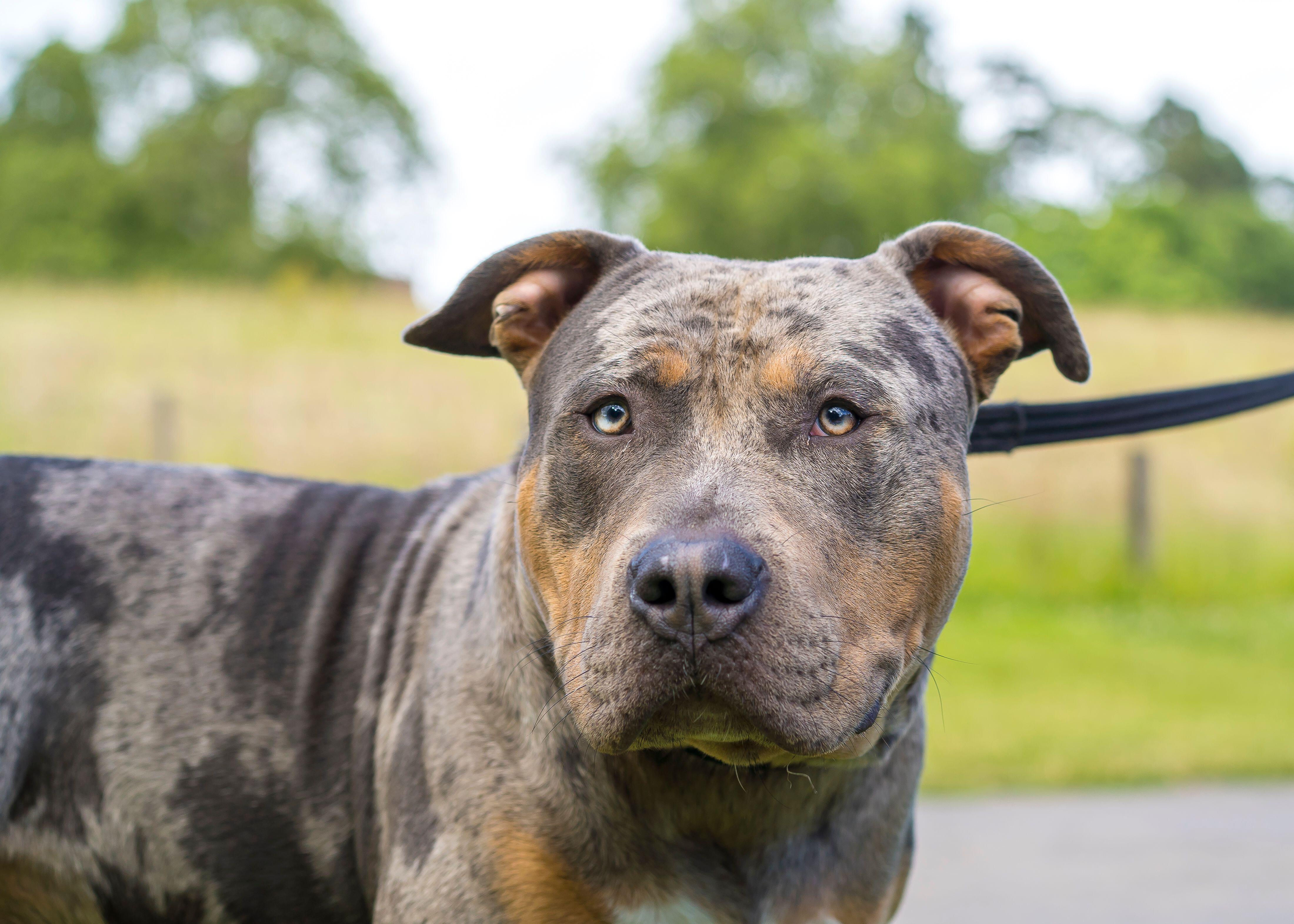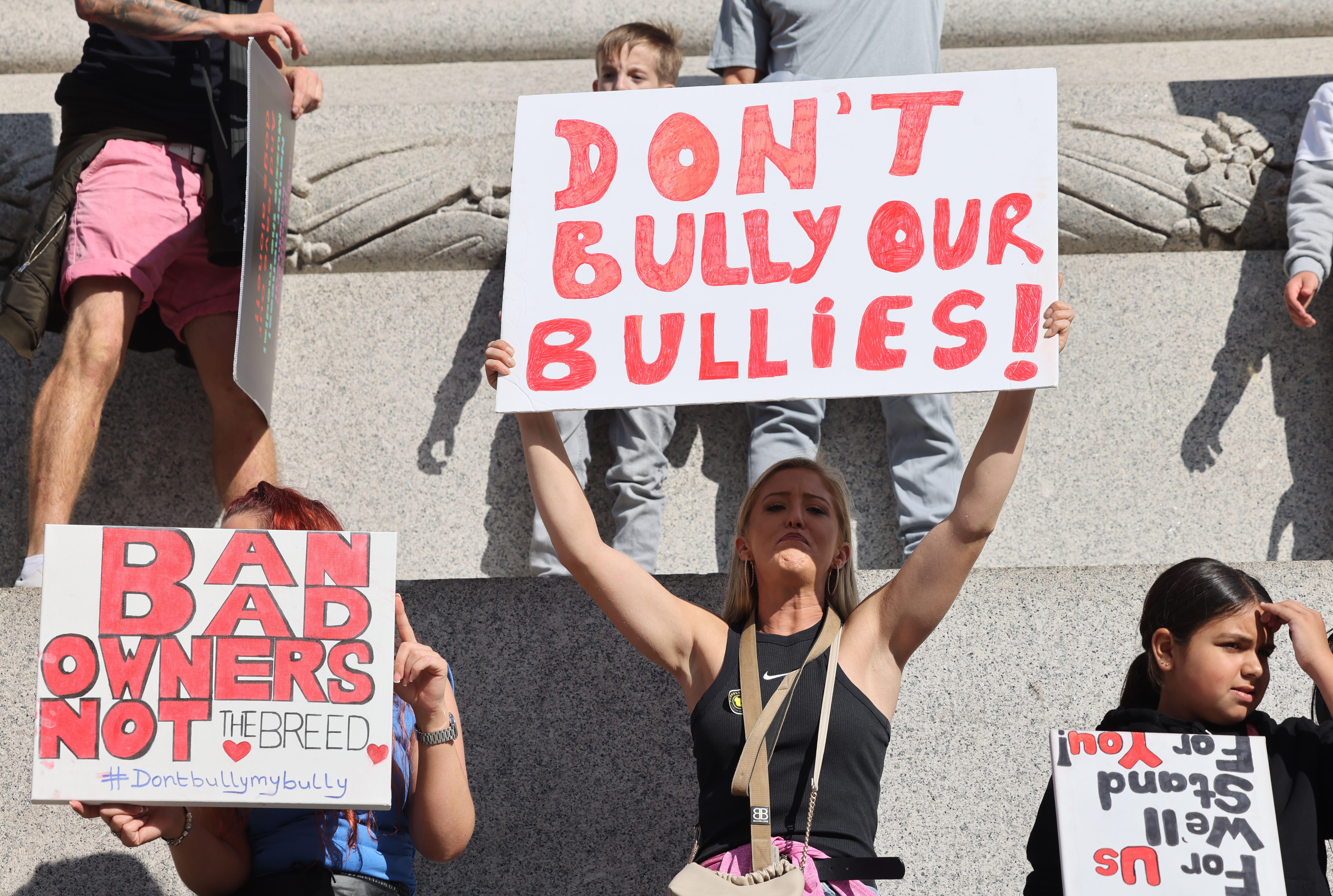XL Bullies: Why the law is so toothless when it comes to dealing with dangerous dogs
Adam Watts, a 55-year-old father of five, had spent 20 years taking in dangerous dogs when he was killed by one of the animals in his care. The owner of Juniper Kennels and Cattery in Auchterhouse near Dundee, he was attacked in December 2021 by an XL Bully that had been seized from its owner by police. Watts, who had been the sole parent to his five sons after his wife died of cancer, was well regarded as someone who had a talent for rehoming previously mistreated animals. After his death, Save Our Seized Dogs, a group which helps owners whose pets are confiscated under the 1991 Dangerous Dogs Act, said he would take any dog and give them the “chance of life”.
In the two years since Watts’ death, the debate over whether there are truly dangerous dogs or just irresponsible owners has come to the fore amid a series of high-profile incidents seemingly involving just one breed – the XL Bully. In May last year, 63-year-old Agnes Donaldson was attacked as she walked her Yorkshire Terrier Milly in Castlemilk, Glasgow, and later had to have a metal plate inserted in her wrist after it was broken in two places. Milly, who received puncture wounds to her kidney, died. In England there have been a series of high-profile incidents, including the death of Ian Price, 52, who was mauled to death by two dogs, believed to be XL Bullies, in Staffordshire in September.
It was following that particular incident and amid increased pressure from both the media and the public that Prime Minister Rishi Sunak said work had begun to ban the breed which had become a “danger to our communities”. In a video posted on social media, the prime minister said: “It’s clear this is not about a handful of badly trained dogs, it’s a pattern of behaviour and it cannot go on.”
That work culminated in XL Bullies being added to the list of breeds banned in England and Wales under the Dangerous Dogs Act, meaning owners have until the end of this month to apply for a Certificate of Exemption if they want to keep their dog. It’s now illegal to sell an XL Bully, give one away or have one in public without a lead and muzzle.

But despite the media coverage and an apparently rising tide of incidents, those changes in the law do not yet apply in Scotland, where the government initially took what it believed to be a more considered approach. To its critics, the Scottish Government’s response has been dangerously negligent. Indeed, Holyrood understands that the prime minister was at a loss to understand why the Scottish Government didn’t just adopt the same approach as England. Over Christmas, government ministers in Scotland were forced to warn against bringing the dogs north of the border after it emerged people were planning to do exactly that.
Sammy Wilkinson was one of those who brought XL Bullies to Scotland ahead of the ban coming into force in England and Wales. A tanning salon owner from Wolverhampton, he says he has helped rehome about 35 dogs in total, with around 15 coming to Scotland.
“I’ve always been passionate about animal welfare and this breed-specific legislation is absolutely ridiculous – it’s targeting the wrong end of the lead,” he says. “No dog is born evil; they are born a blank slate and it’s up to us to carve them into the final product. The way they turn out is a result of their upbringing.”
Wilkinson says he has been inundated with requests to rehome dogs, with a number of XL Bully groups on Facebook counting thousands of members.
“The sheer amount of dogs being dumped is absolutely heartbreaking,” he says. “I’ve had to have my phone on silent for the last week due to the amount of messages I’m getting. It’s unbelievable the pressure I’ve been under – I’m having to subcontract the work out now. Some of the reasons people have given [for getting rid of their dogs] are absolutely ridiculous. If a dog leaves an irresponsible owner, I don’t mind where it goes, whether it’s England or Scotland.”
But it was the prospect of a large number of XL Bullies arriving in Scotland that eventually spurred the Scottish Government into action. The speed of the change in England appears to have caught Scottish ministers on the hop. Apparently loath to follow Westminster’s legislative lead, the government in Edinburgh found itself in the awkward situation of appearing to have created a safe space for XL Bullies.
When it emerged some of the dogs were being transported north of the border ahead of the 31 December deadline, community safety minister Siobhian Brown expressed her “concern”, warning people not to “use loopholes” to rehome their pets. In November, she had retweeted a message from the Scottish SPCA which rejected the premise that XL Bullies are dangerous and the need for a ban.
Amid what she called an “influx” of the dogs into Scotland, a slightly panicky sounding Brown appeared before MSPs last week, telling them the government’s policy on Bullies was under “urgent review” and advising Scots not to buy the dogs.
“The unintended consequence of the UK Government’s policy is that we are now seeing an influx of XL Bully dogs coming to Scotland,” Brown said. “It’s important to ensure Scotland does not become a safe haven or dumping ground for XL Bullies from England and Wales.”
Brown’s political opponents said the dog’s dinner created by the government had been both entirely predictable and altogether avoidable.
A week after rejecting the need for additional legislation in Scotland, First Minister Humza Yousaf finally confirmed his government’s U-turn, telling MSPs it was necessary to “replicate” the restrictions in England and Wales.
“Ultimately, although we do have a very good system of dog control notice schemes and we do take the approach of deed not breed, we have to respond to the situation as it currently stands and therefore we will do what we need to do to ensure public safety.”
Yet concerns about measures to control dangerous dogs predate the recent row over XL Bullies. When the Bully is outlawed in February it will join the Pitbull Terrier, Japanese Tosa, Dogo Argentino and Fila Braziliero on the breeds banned under the Dangerous Dogs Act. Despite being banned, Pitbulls have continued to be involved in attacks, including in the death of dog walker Natasha Johnston, who was killed by her own dog, Stan, in January last year.
Scotland also has its own 2010 Control of Dogs Act, which amends the original 1991 legislation and makes it a criminal offence to allow any dog to be dangerously out of control in any place.
But despite the 2010 legislation, Jenny Marra, the former Labour MSP who led a 2019 parliamentary inquiry into dog control, says Yousaf’s comments about a “strict” and “controlled regime” in Scotland “couldn’t be further from the truth”.
“The more restrictions on these dangerous dogs the better,” she says. “My concern is for child and community safety. Our report from 2019 said the laws needed completely overhauled and were not fit for purpose.
“When we looked at the current legislation that governs this, the committee concluded that there is not a stricter regime on dog control in Scotland, as the first minister said. To put it kindly, that was a gross misunderstanding of the reality. There were parts of the 2010 act that haven’t even been implemented – there was provision in the act for a database of dogs in Scotland but the government has never bothered implementing that. We don’t know how many dog attacks we have. What we do know is that we have a government that was happy for these dogs to come into Scotland despite people being killed in the last year.”
The number of attacks involving dogs was already on the increase even before the recent controversies surrounding XL Bullies. According to the British Medical Journal, hospital admissions as a result of dog bites increased 88 per cent in England between 2007 and 2022.
And while there were just two deaths recorded in England and Wales in 2019 because of dog attacks and three in 2020, the figure for the first nine months of 2023 was 16. In Scotland, there have been three deaths due to dog attacks since 2010. In the same period, there has been a nearly doubling for hospital admissions from dog attacks, from 487 in 2010 to 933 in 2022.

At least part of the increase in attacks can be explained by the pandemic, which resulted in a surge in dog ownership as people spent more time at home. Many of those with XL Bullies were attempting to get rid of the animals even before the ban in England and Wales was announced.
Among the groups which have spoken out against the ban is the Scottish SPCA, which has urged responsible owners not to attempt to rehome their dogs in Scotland but instead apply for an exemption that would allow the animal to be kept under the provisions of the 1991 legislation.
Mike Flynn, chief superintendent of the Scottish SPCA, is himself a dog owner who once had to apply for an exemption for a Pitbull he owned. He says the legislation in Scotland is sufficient but is not being applied rigorously enough.
“Public safety comes first. I’m a firm believer that the courts should start taking a harder attitude to people and not just destroying individual dogs and giving people a slap on the wrist,” he says.
“If you allow your dog to be out of control and injure people, you should go to jail.
“You see people convicted of having a dangerous dog – they plead guilty, the owner gets a £200 fine, no jail sentence, and often does not even get banned from having another dog. Of all the attacks you read about, 99 per cent are down to irresponsible ownership.”
A ministerial statement on the Scottish Government’s approach is expected to take place this week, with a ban on XL Bullies expected to come into force as early as next month. Yet the ruling party is itself split on whether outlawing the animals is the correct approach. SNP MSP Christine Grahame, who brought forward the 2010 Control of Dogs legislation, has lodged a motion entitled Banning XL Bully Dogs is Not the Answer. It is being supported by her party colleagues Kenny Gibson and Emma Harper and calls for new legislation to improve responsible dog ownership, arguing “the UK Government has rushed into banning a poorly-defined breed type”.

During the 2019 review of Scotland’s dog safety legislation, MSPs said little had been done since Grahame’s bill had been passed, accusing the government of a “total lack of leadership” and “complacency”. One former member of the committee, Tory MSP Liam Kerr, recently said the evidence he heard on dog attacks would “stay with him forever”.
Marra, who led the audit committee’s inquiry, says she cannot understand why the Scottish Government prevaricated over XL Bullies.
“I seriously hope they weren’t playing politics with something as serious as community and child safety,” she says. “I would hope the first minister wasn’t taking this as a dividing line – that would be a seriously stupid thing to do. I would take him at his word that he thought we have a strict regime and say he has a complete misunderstanding of the situation.”
Holyrood Newsletters
Holyrood provides comprehensive coverage of Scottish politics, offering award-winning reporting and analysis: Subscribe